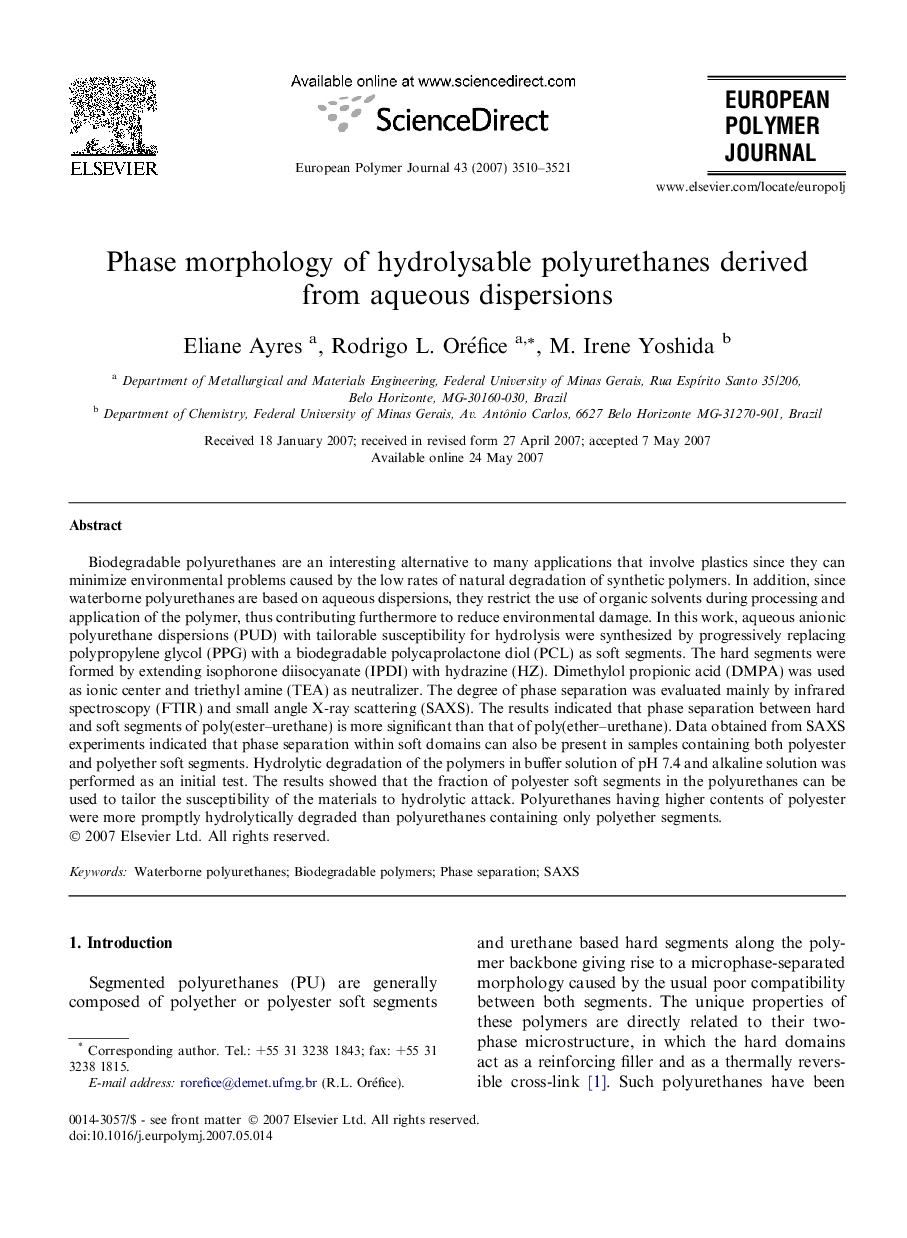| کد مقاله | کد نشریه | سال انتشار | مقاله انگلیسی | نسخه تمام متن |
|---|---|---|---|---|
| 1403509 | 984828 | 2007 | 12 صفحه PDF | دانلود رایگان |

Biodegradable polyurethanes are an interesting alternative to many applications that involve plastics since they can minimize environmental problems caused by the low rates of natural degradation of synthetic polymers. In addition, since waterborne polyurethanes are based on aqueous dispersions, they restrict the use of organic solvents during processing and application of the polymer, thus contributing furthermore to reduce environmental damage. In this work, aqueous anionic polyurethane dispersions (PUD) with tailorable susceptibility for hydrolysis were synthesized by progressively replacing polypropylene glycol (PPG) with a biodegradable polycaprolactone diol (PCL) as soft segments. The hard segments were formed by extending isophorone diisocyanate (IPDI) with hydrazine (HZ). Dimethylol propionic acid (DMPA) was used as ionic center and triethyl amine (TEA) as neutralizer. The degree of phase separation was evaluated mainly by infrared spectroscopy (FTIR) and small angle X-ray scattering (SAXS). The results indicated that phase separation between hard and soft segments of poly(ester–urethane) is more significant than that of poly(ether–urethane). Data obtained from SAXS experiments indicated that phase separation within soft domains can also be present in samples containing both polyester and polyether soft segments. Hydrolytic degradation of the polymers in buffer solution of pH 7.4 and alkaline solution was performed as an initial test. The results showed that the fraction of polyester soft segments in the polyurethanes can be used to tailor the susceptibility of the materials to hydrolytic attack. Polyurethanes having higher contents of polyester were more promptly hydrolytically degraded than polyurethanes containing only polyether segments.
Journal: European Polymer Journal - Volume 43, Issue 8, August 2007, Pages 3510–3521